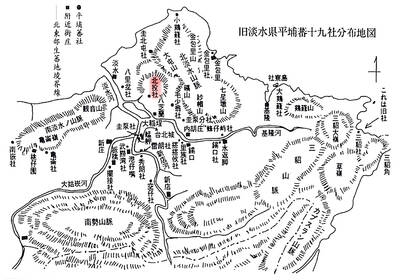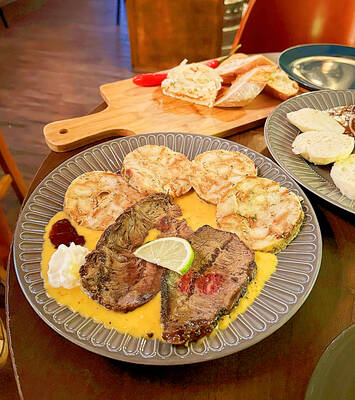VIEW THIS PAGE The Last House on the Left
Two girlfriends accept an offer of some dope from a teenager and end up abducted and brutalized — and worse. In a twist lifted from Ingmar Bergman’s Virgin Spring, the attackers inadvertently end up in the home of one of the victims and every circle of hell breaks loose when the parents discover who they are. If this remake of an American exploitation classic had aimed for the same impact today as Wes Craven’s original in the early 1970s, we would have to sit through a nauseating marathon of rape, molestation, torture and murder. So credit this version from co-producer Craven and director Dennis Iliadis for taking its characters more seriously. But it’s still too brutal for most tastes, especially the coda, which might remind alert viewers of Takashi Miike’s Audition. Marketing trivia: The trailer makes splendid use of a Taken by Trees cover of Sweet Child O’ Mine, while the Taiwanese distributor (Universal), in a cute advertising ploy, calls the remake one of the 10 most banned films in history — a clever deception, given that its target audience wasn’t born when Craven’s drive-in opus came out and probably know nothing of it or its notoriety.
God’s Puzzle
Now here’s some real Takashi Miike. Japan’s prolific maverick director had a fairly quiet 2008, directing a TV series and this very strange feature, in which theories of physics and catastrophe frame a philosophical adventure of sorts, together with helpings of comedy and a bit of romance. A twin fills in for his brother and convinces a female prodigy to share her talents in building a doomsday machine. Something for everyone, it appears, yet despite all this, Variety called this film “Miike’s most conventional pic” — but still entertaining.
Twentieth Century Boys: Chapter Two — The Last Hope
More manga action and drama as the mysterious, masked cult leader from the first film consolidates his power and leads the world (well, Japan) toward total disaster. Set in 2015, our heroes from the first film are tasked with stopping this train of events, though critics wondered if the compression of masses of manga source material into a two-hour-plus exposition wouldn’t get in their way. Perhaps naive in places, the imagery remains quite potent, and the sense of dread and powerlessness seems better suited now to Asian countries struggling with their economies. Part 3 opens in Japan in August.
Happy Flight
Made with the blessing and assistance of Japan’s All-Nippon Airways, this is an ensemble melodrama that starts with a run-through of the aviation industry and ends with an Airport-style drama on a plane forced to return to Tokyo despite an approaching typhoon. Viewers suspicious at the idea of a potential disaster movie supported by a real airline may find themselves surprised at the entertainment on offer as a wide range of characters spice up proceedings aboard the craft and back on the ground.
The Gig 2
Part 1 of this romantic comedy series from Thailand screened at Ximending’s Baixue theater in January; this 2007 sequel is at the same theater, and carries the same payload of klutzy young men chasing a bunch of young women who spend a good chunk of time talking the nonsense that such films require. More corny than raunchy, despite the American Pie references, and contains enough “gay panic” and fat jokes to remind the viewer that not all Thai youngsters prefer to see homosexual hit men and rotund ladyboy ghosts on the big screen. Also known as Gig Number Two.

Seven hundred job applications. One interview. Marco Mascaro arrived in Taiwan last year with a PhD in engineering physics and years of experience at a European research center. He thought his Gold Card would guarantee him a foothold in Taiwan’s job market. “It’s marketed as if Taiwan really needs you,” the 33-year-old Italian says. “The reality is that companies here don’t really need us.” The Employment Gold Card was designed to fix Taiwan’s labor shortage by offering foreign professionals a combined resident visa and open work permit valid for three years. But for many, like Mascaro, the welcome mat ends at the door. A

The Western media once again enthusiastically forwarded Beijing’s talking points on Japanese Prime Minister Sanae Takaichi’s comment two weeks ago that an attack by the People’s Republic of China (PRC) on Taiwan was an existential threat to Japan and would trigger Japanese military intervention in defense of Taiwan. The predictable reach for clickbait meant that a string of teachable moments was lost, “like tears in the rain.” Again. The Economist led the way, assigning the blame to the victim. “Takaichi Sanae was bound to rile China sooner rather than later,” the magazine asserted. It then explained: “Japan’s new prime minister is

NOV. 24 to NOV. 30 It wasn’t famine, disaster or war that drove the people of Soansai to flee their homeland, but a blanket-stealing demon. At least that’s how Poan Yu-pie (潘有秘), a resident of the Indigenous settlement of Kipatauw in what is today Taipei’s Beitou District (北投), told it to Japanese anthropologist Kanori Ino in 1897. Unable to sleep out of fear, the villagers built a raft large enough to fit everyone and set sail. They drifted for days before arriving at what is now Shenao Port (深奧) on Taiwan’s north coast,

Divadlo feels like your warm neighborhood slice of home — even if you’ve only ever spent a few days in Prague, like myself. A projector is screening retro animations by Czech director Karel Zeman, the shelves are lined with books and vinyl, and the owner will sit with you to share stories over a glass of pear brandy. The food is also fantastic, not just a new cultural experience but filled with nostalgia, recipes from home and laden with soul-warming carbs, perfect as the weather turns chilly. A Prague native, Kaio Picha has been in Taipei for 13 years and